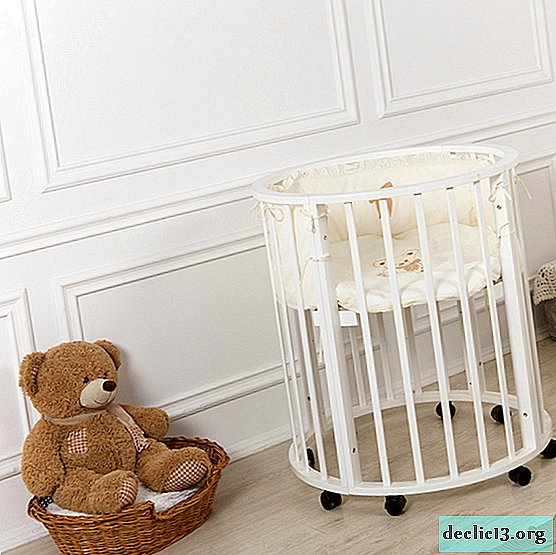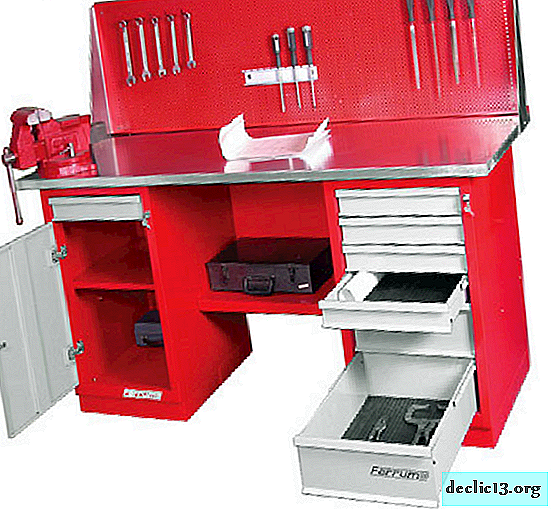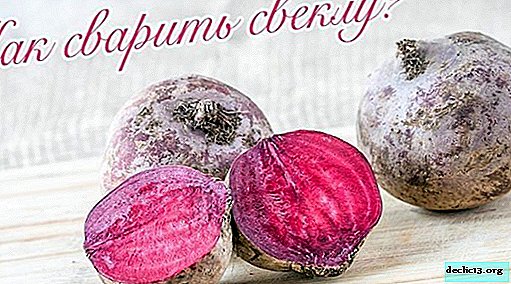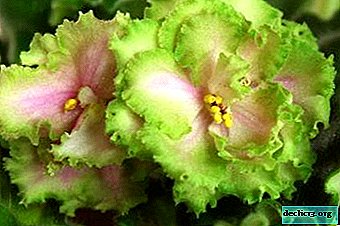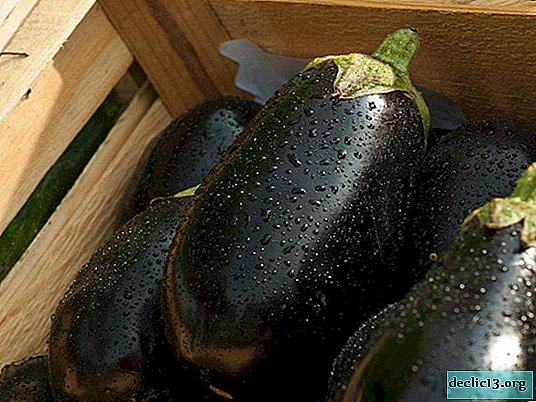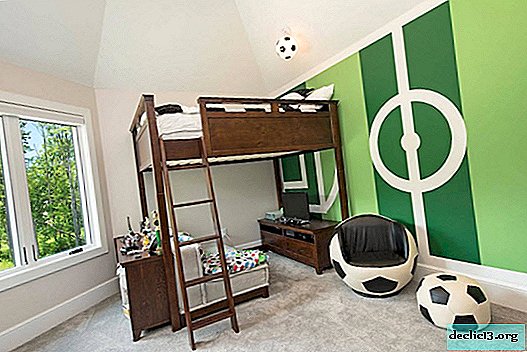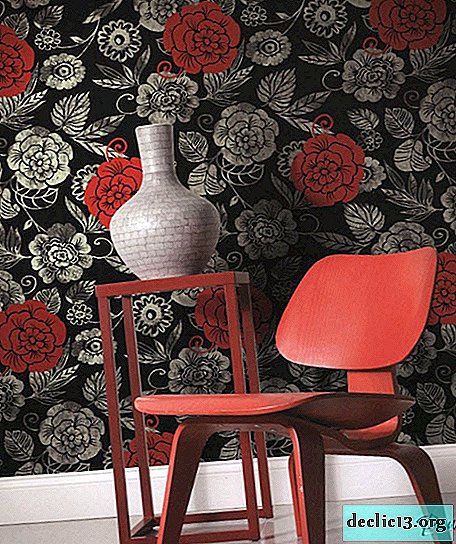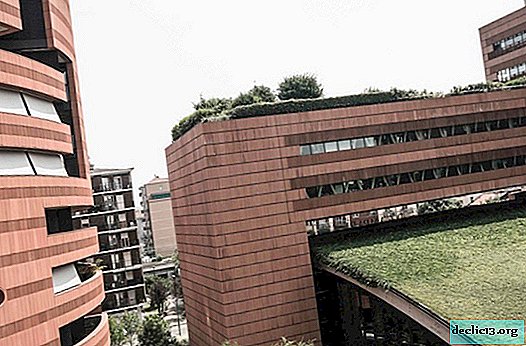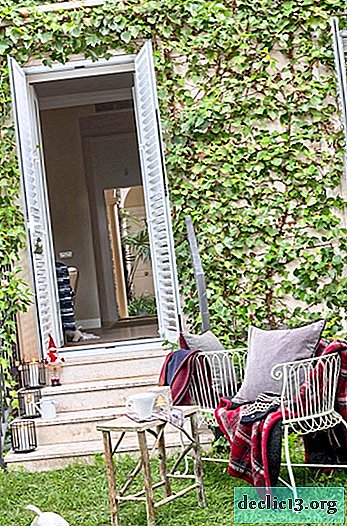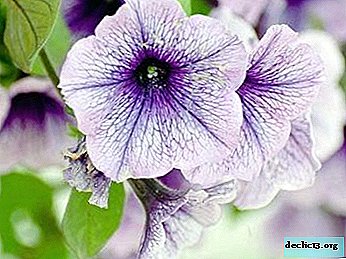Unpretentious and easy to grow peperomia: flower care at home and in the flowerbed
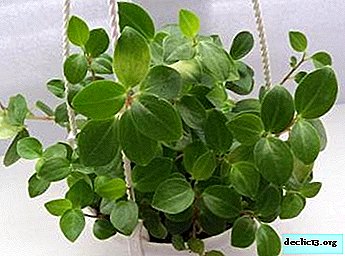
Peperomia is an evergreen perennial of the pepper family. From Latin, the name translates as "percussive."
There are more than 1000 varieties of this plant, and South America is considered its Homeland. It occurs both in the wild and in cultivated form.
In the article, we will show in the photo what the plant looks like, and also tell how to take care of it at home and in the open ground so that the flower has a healthy and beautiful appearance.
How to care for a houseplant at home?
- Temperature. Peperomia lacks the so-called dormant period, therefore, for a comfortable existence, “room” temperature is enough for it - 16-19 degrees Celsius in winter and 20-24 degrees in summer. Sudden changes in temperature can harm the plant.
- Watering. Water for irrigation should be soft or at least settled. Water the plant year-round - about 1 time in 10-15 days. In spring and summer, abundant watering is required, in winter it is quite moderate. In warm weather, the leaves must be sprayed with water, as well as the air around the pot.
- Lighting. The ideal light regime for peperonium is partial shade. But direct sunlight is best avoided - excessive lighting can harm the plant, the leaves may wrinkle and wither. For varieties of plants with variegated leaves, artificial lighting is ideal.
- Cropping Methods:
- Topping. To achieve "bushiness" pinch each shoot of the plant, removing approximately a fifth of the total length. This procedure should be carried out regularly, then the bush will become spherical.
- Pruning. In ampelo-grown peperomies, the vegetation in the center of the bush is cut off, leaving a third of the original length, and the extreme long shoots are not subjected to changes.
- Compact types of peperomia are cut off only to remove diseased and dead leaves.
- Priming. For the growth of peperomia, preference should be given to nutritious and loose soil. A mixture of sand, peat and humus is perfect. Do not use heavy soil: it will interfere with the access of oxygen to the root system, as a result of which the bush may die.
- Top dressing.How to feed peperonium? The flower is fertilized throughout the year, in the spring and summer months - once every 10-14 days, in the cold season - once a month. As a top dressing, a complex mineral fertilizer for indoor plants is used. For peperomia, the dosage indicated in the instructions should be reduced by half.
- Transfer. How to transplant a plant at home and how often do you need to do this? Let's consider in more detail:
- A plant is transplanted into a new pot in spring time.
- A young plant is replanted every spring, an adult (older than three years) - once every two years.
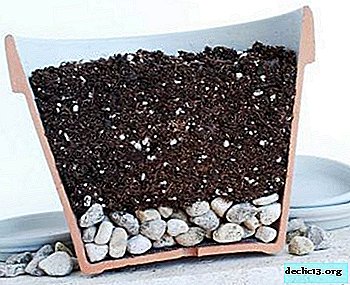 Drainage is poured at the bottom of the pot (for example, small pebbles with charcoal). It is necessary to prevent stagnation of water. Layer - about 4 cm (depending on the depth of the pot). Then the soil is laid, loose and light. It needs to be moistened a little and allowed to soak in water.
Drainage is poured at the bottom of the pot (for example, small pebbles with charcoal). It is necessary to prevent stagnation of water. Layer - about 4 cm (depending on the depth of the pot). Then the soil is laid, loose and light. It needs to be moistened a little and allowed to soak in water.- Remove the plant from the old pot with a lump of earth, put in a new container.
- Pour and carefully compact the soil between the walls of the tank and the plant. About 2 cm should remain to the edge of the pot.
- The base of the stem does not need to be planted too deep, it will be more correct to leave it above the soil surface.
- Further, the transplanted plant is recommended to be watered and put in a warm, dark place, and after 2 weeks it can be returned to its place.
- For each subsequent transplant, it is necessary to select a new pot, it should be one and a half times larger than the year before last or 3-4 cm larger than the previous one in diameter.
- Pot. The capacity for growing peperomia should correspond to the size of the root system, which in this plant is located close to the soil surface. The best option is a shallow but wide pot. Preference should be given to clay containers - in them the plant will feel more comfortable than in plastic ones. Drainage holes are required at the bottom of the pot to remove moisture and allow oxygen to flow.
Attention! When transplanting, the top layer of the substrate must be changed, since it is clogged stronger than others, including from irrigation with hard water.
- Wintering. The plant has no dormant period, so caring for it in the winter is quite simple. If it is not possible to lower the temperature (recommended for the winter season -16-20 degrees), you can leave peperomia in the usual room conditions. In this case, you need to take care of a good, perhaps artificial lighting. The frequency of top dressing in the winter season must be reduced.
- After buying in the store, the plant needs to be given a day to adapt to a new room, and then it is worth replanting it, since the soil for transportation contains substances that can harm peperomia. The first two weeks after the acquisition, it is better not to feed the plant.
During transplantation, it is worth examining the root system for rot, removing damaged areas. You can carry out the procedure for disinfecting the roots in cinnamon or coal. After transplantation, peperomia is not fertilized until next spring.
We offer you to watch a video about peperomia care at home:
Features of outdoor care
 Some varieties of peperomia, for example, Cusieliformes peperomia, can be grown both indoors and in the open soil of a mixed garden. In this case, you need to plant the plant in a shaded place, if necessary, you can create a shadow for it using a canopy of fabric or dense oilcloth. Soil, as in the case of home cultivation, must be fertilized regularly. In the summer, the frequency of watering needs to be increased. In autumn, the plant is transplanted into a pot for wintering in the room.
Some varieties of peperomia, for example, Cusieliformes peperomia, can be grown both indoors and in the open soil of a mixed garden. In this case, you need to plant the plant in a shaded place, if necessary, you can create a shadow for it using a canopy of fabric or dense oilcloth. Soil, as in the case of home cultivation, must be fertilized regularly. In the summer, the frequency of watering needs to be increased. In autumn, the plant is transplanted into a pot for wintering in the room.
If peperomia is grown in open ground, the risk of pests on it increases. It is important to monitor the plant and timely carry out antiparasitic treatment.
Plant photo
Look at the photo of how a plant looks very similar to peppers, which will be discussed further on, it fully corresponds to its name - peperomia.



Peperomia bloom is especially surprising: its flowers are tiny ears or spikelets. You can study the features of the process and photos of blossoming plants in this material.
Pests
| Pest | Cause | Treatment |
| Spider mite |
|
|
| Nematodes | Infection from a nearby plant |
|
| Thrips |
| Insecticide treatment |
| Mealybug |
|
|
| Shield | Dry air | Insecticide treatment |
Disease
| Disease | Cause | Treatment |
| Leaf warp, leaf wilting | Sunburn |
|
| Falling healthy leaves from a shrub | Too low air temperature (the plant freezes) | Gradual increase in room temperature |
| Withering leaves, the appearance of gray spots on them and on the stems | Rotting plants due to excess moisture |
|
| Falling leaves | Lack of moisture |
|
| The formation of brown spots on the leaves |
| Moving to a warm room, away from the draft |
Read more about the diseases and pests of peperomia in this article.
Breeding
- Easy to propagate by dividing the bush when transplanting. A simple and popular way.
- Peperomia is often propagated by leaf or stem cuttings. After processing in a mixture of sand and peat, the plant is rooted in a container and covered with plastic wrap or glass.
- Using seeds, the plant is propagated in March or April. The optimum temperature is 20-25 degrees. Sown in small greenhouses, in a prepared mixture of sand and peat. Do not fall asleep with soil. The containers are covered with glass or film and put away in a dark place.
Mini-greenhouses can be transferred to the light when the seeds germinate, but it is important to ensure their shading. When at least two leaves appear (about a month after seed germination), plants can be planted.
In the video you can see how to properly propagate peperomia:
Peperomia has a wide variety of varieties, but their care is about the same. Scientists have proved the benefits of plants for human health: it releases volatile, which destroy 70% of pathogenic bacteria in the air. Due to such qualities, its unpretentiousness and ease of cultivation, peperomia has gained widespread popularity everywhere.

 Drainage is poured at the bottom of the pot (for example, small pebbles with charcoal). It is necessary to prevent stagnation of water. Layer - about 4 cm (depending on the depth of the pot). Then the soil is laid, loose and light. It needs to be moistened a little and allowed to soak in water.
Drainage is poured at the bottom of the pot (for example, small pebbles with charcoal). It is necessary to prevent stagnation of water. Layer - about 4 cm (depending on the depth of the pot). Then the soil is laid, loose and light. It needs to be moistened a little and allowed to soak in water.


